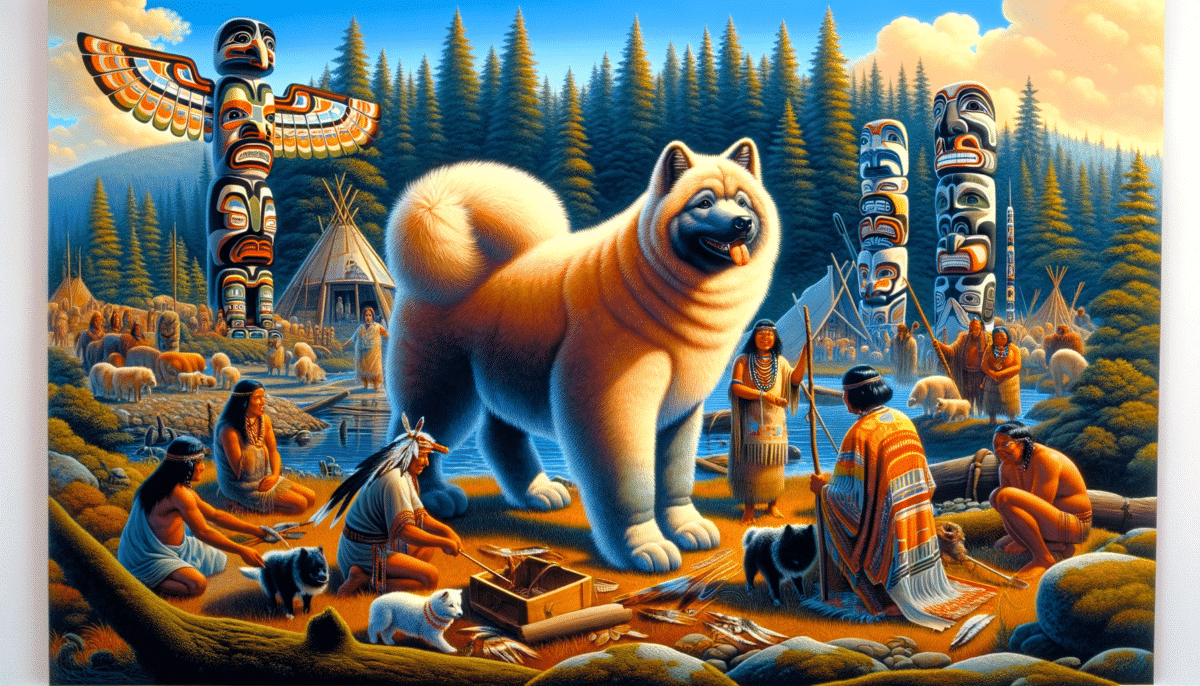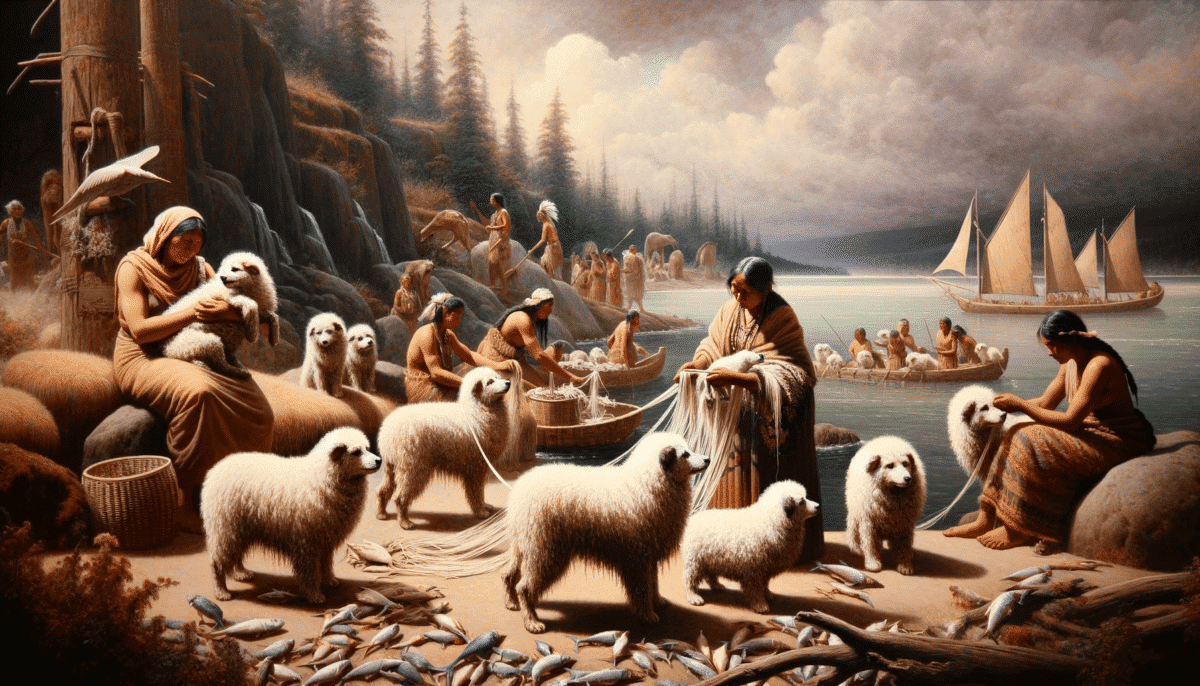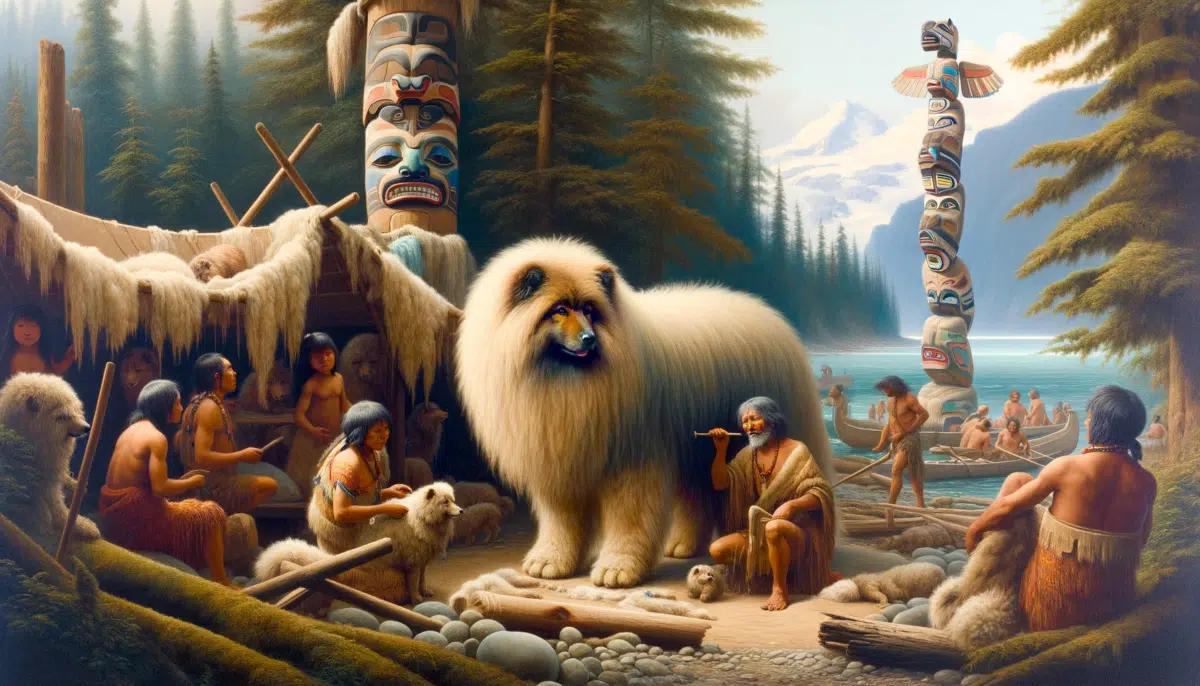Introduction to the Woolly Dog: Once a cherished companion of Indigenous peoples in the Pacific Northwest, the woolly dog is a fascinating chapter in the history of human-animal relationships. With its distinctive fluffy coat, this unique breed was an integral part of the cultural and economic fabric of societies like the Coast Salish. But, like many other creatures, the woolly dog succumbed to extinction. What happened to this intriguing canine?
The Woolly Dog’s Unique Characteristics

The woolly dog, a breed distinct for its long, soft hair, was not a wild species but rather a product of selective breeding practices by the Indigenous peoples. They were kept separate from other village dogs to maintain their special coat, which was prized for making blankets and other textiles. This coat was a valuable commodity, and the dogs were sheared much like sheep to harvest their wool.
Impact of European Settlement
The decline of the woolly dog coincided with the arrival of European settlers in the 18th and 19th centuries. Several factors contributed to its extinction. First, the introduction of sheep by European settlers provided an alternative source of wool. Sheep’s wool was easier to harvest and process, and it gradually replaced the need for dog wool in textile production.
Cultural Disruption and Loss of Breeding Practices
Second, the cultural disruption caused by colonization had a significant impact. Indigenous practices, including those related to the breeding and keeping of woolly dogs, were suppressed or lost as native populations faced displacement and cultural assimilation. The traditional knowledge of managing these dogs was eroded, and with it, the practice of breeding them.
Genetic Dilution and the End of the Woolly Dog

Another critical factor was the interbreeding of woolly dogs with other dog breeds brought by Europeans. This genetic mixing diluted the distinctive characteristics. Over time, as the breed was not selectively maintained, the woolly dogs simply ceased to exist as a distinct breed.
Legacy and Lessons

The extinction of the woolly dog is more than just the loss of a breed; it symbolizes the broader impacts of colonization on Indigenous cultures and biodiversity. Today, the woolly dog lives on primarily in the historical accounts, archaeological findings, and the oral histories of Indigenous peoples. Museums and researchers continue to study the remnants of this breed to understand better its role in pre-colonial societies and the consequences of its disappearance.
Conclusion
The woolly dog’s extinction is a complex tale woven from threads of cultural change, colonial impact, and the unintended consequences of globalization. It serves as a poignant reminder of the intricate connections between human societies and the animal world, and the delicate balance that sustains biodiversity. As we reflect on this story, it challenges us to consider how our actions and cultural practices continue to shape the fate of other species sharing our planet.
Up next:
Meet the smallest dog breed in the world: Chihuahua
Meet he Largest Dog Breed in the World: Mastiffs
Join our Forum for free today!

- The Kleptomaniac Cat That Rules Houston - July 20, 2024
- Elephant Makes a Lifelong Friend at Sanctuary in Tennessee - July 14, 2024
- Evidence For World’s Oldest Fossilized Forest Discovered in New York - July 11, 2024

